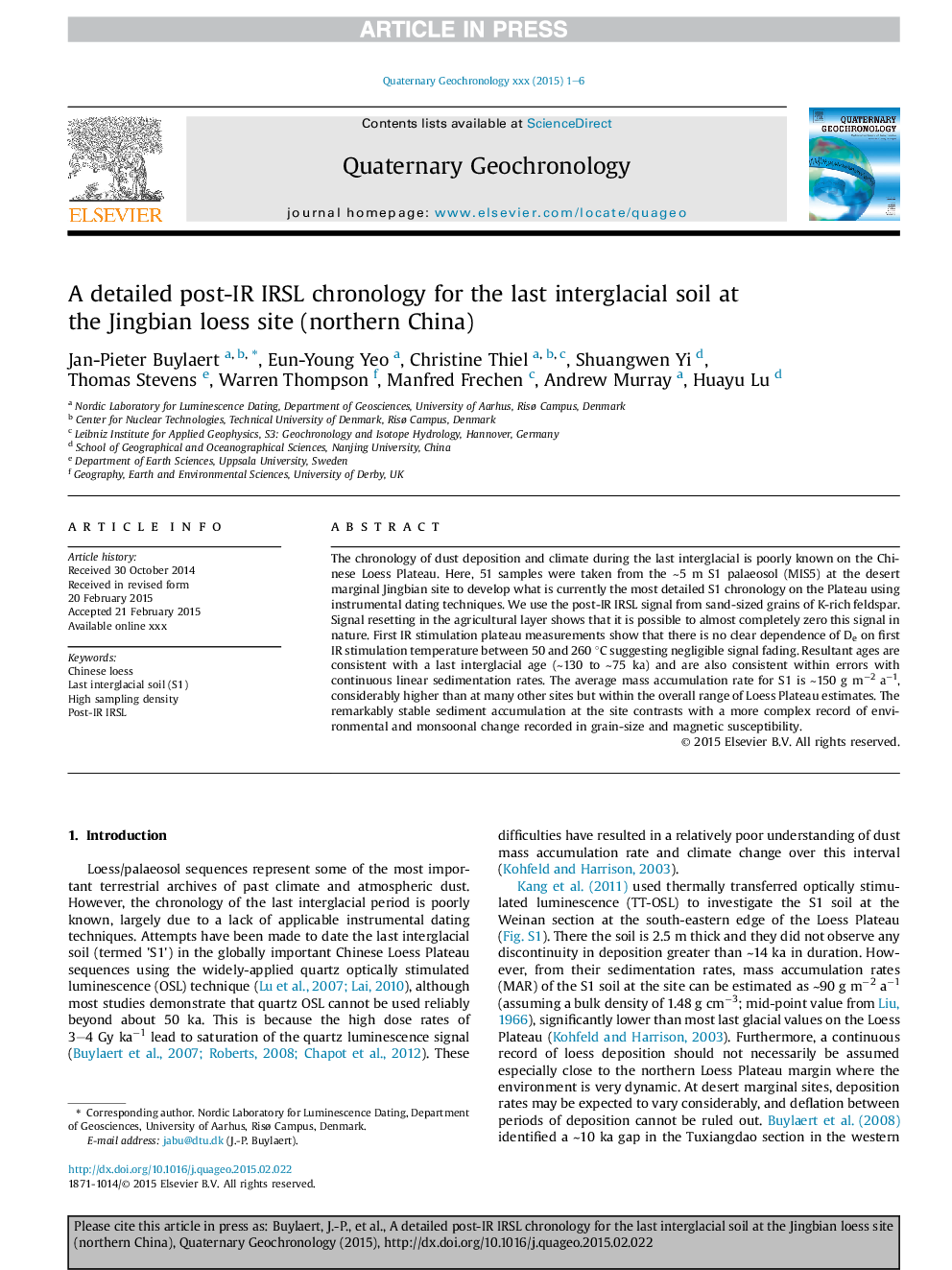| Article ID | Journal | Published Year | Pages | File Type |
|---|---|---|---|---|
| 6442540 | Quaternary Geochronology | 2015 | 6 Pages |
Abstract
The chronology of dust deposition and climate during the last interglacial is poorly known on the Chinese Loess Plateau. Here, 51 samples were taken from the â¼5 m S1 palaeosol (MIS5) at the desert marginal Jingbian site to develop what is currently the most detailed S1 chronology on the Plateau using instrumental dating techniques. We use the post-IR IRSL signal from sand-sized grains of K-rich feldspar. Signal resetting in the agricultural layer shows that it is possible to almost completely zero this signal in nature. First IR stimulation plateau measurements show that there is no clear dependence of De on first IR stimulation temperature between 50 and 260 °C suggesting negligible signal fading. Resultant ages are consistent with a last interglacial age (â¼130 to â¼75 ka) and are also consistent within errors with continuous linear sedimentation rates. The average mass accumulation rate for S1 is â¼150 g mâ2 aâ1, considerably higher than at many other sites but within the overall range of Loess Plateau estimates. The remarkably stable sediment accumulation at the site contrasts with a more complex record of environmental and monsoonal change recorded in grain-size and magnetic susceptibility.
Keywords
Related Topics
Physical Sciences and Engineering
Earth and Planetary Sciences
Geochemistry and Petrology
Authors
Jan-Pieter Buylaert, Eun-Young Yeo, Christine Thiel, Shuangwen Yi, Thomas Stevens, Warren Thompson, Manfred Frechen, Andrew Murray, Huayu Lu,
